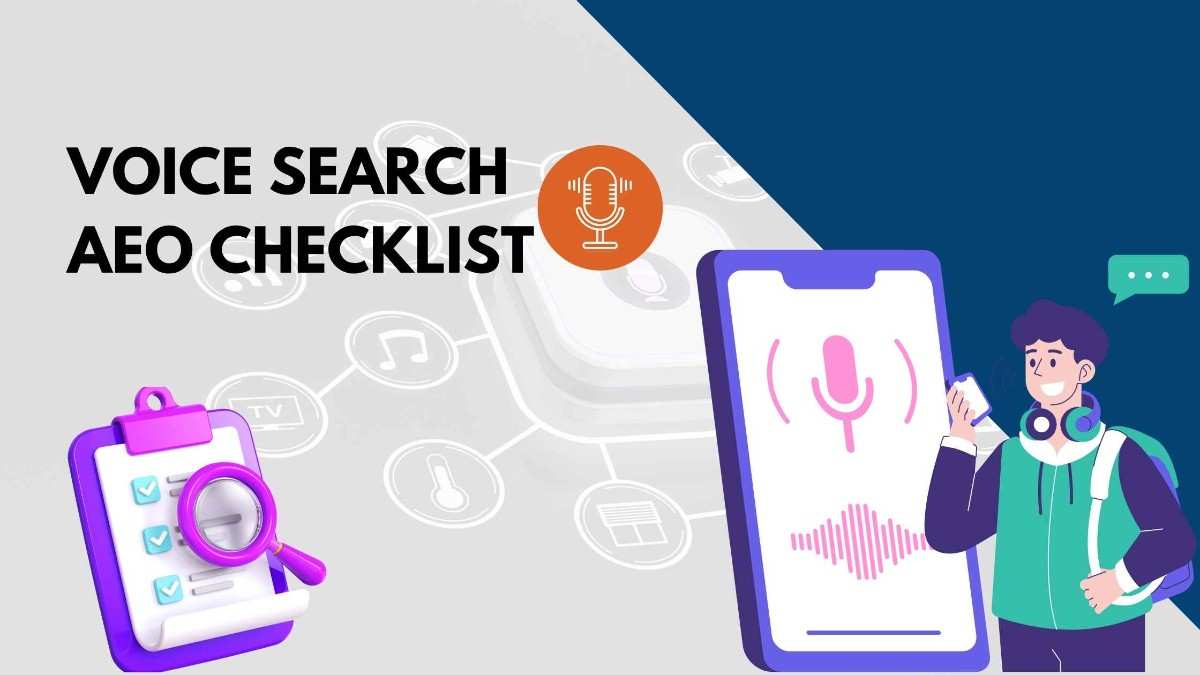
Introduction
In the rapidly evolving world of digital marketing voice searches are becoming a dominant trend. Optimising for Answer Engine Optimisation (AEO) has become crucial due to the growing usage of voice assistants such as Google Assistant, Alexa, and Siri.
AEO is all about helping search engines deliver direct precise answers to user queries especially in a voice-based format. If you want your content to appear as the spoken response in voice searches, follow this 2025-ready Voice Search AEO checklist to stay ahead.
How do Long-Tail Keywords Help Voice Searches?
People don’t speak the same way they type. A voice search is more likely to be a full question like “ What is the best way to improve local SEO?” than just “ local SEO tips.”
Step of Action:
Use long-tail conversational keywords that reflect how people naturally speak. Tools like Answer The Public and Also Asked can help you find real-world question based queries.
Optimise for Zero-Click Outcomes and Featured Snippets
Answers are frequently taken straight from Google’s featured snippets by voice assistants. This is where AEO comes in; your content should be created to quickly and simply address particular questions.
Step of Action:
Your blog posts should be organised with distinct H2/H3 subheadings that pose questions and then provide simple, factual responses in the first sentence. As a result, the likelihood of being selected for voice snippets increases.
Increase page speed and mobile responsiveness
In your website needs to be speedy and responsive because most voice queries are made on mobile devices.
Action Step:
Utilize tools like Google Page Speed Insights and GT metrix to improve loading speed. Ensure your website comes with compressed images less scripting and responsive design.
Use schema markup or structured data
It is a easier for search engines to understand the context of your content when you use structured data. Adding schema markup to voice responses like FAQ How-To and Article makes it easier for AI engines to recognise your information as reliable.
Action Step:
Use Google’s Structured Data Markup Helper or, other similar tools to add a proper schema. Make FAQ pages and How To types to improve your voice search’s AEO results.

Include FAQ sections on important pages.
FAQs are built to work with voice search. Both user experience and AEO relevance are enhanced when you include a specific FAQ area on your service pages blog entries, or product pages.
Step of Action:
Add five to seven natural language enquiries that are voice search friendly. For instance:
What impact does voice search have on SEO?
A: By focussing on conversational questions, page speed, and structured data, voice search has an impact on SEO.
Give local voice SEO the highest priority
People looking for “restaurants near me” or “best web design company in Chennai” make up about 50% of voice searches. That presents a significant opportunity, for nearby companies.
Step of Action:
To increase exposure in voice search results claim and optimise your Google Business Profile. Include local keywords and highlight landmarks or service locations.

Make sure the information is easy to read and follow
In your material is read aloud by voice assistants. This indicates that lengthy paragraphs and complicated terminology are ineffective.Simplicity and clarity are essential.
Action Step:
Speak in short straightforward terms with a relaxed tone. To increase understanding and voice-readability write at a reading level that fits the ninth grade.
Conclusion: Voice Search and AEO Go Hand in Hand
As voice searches continue to grow in 2025 adapting your content with AEO best practices is the smart move for staying visible. By using structured data focusing on conversational queries and creating answer-friendly content your site can dominate in the AI-powered voice search era.
Start optimizing today the future of search is voice-first.





